 In 2013 the Cairngorms National Park Authority was informed about the extension and expansion of hill tracks on the Dinnet Estate owned by former CNPA Board Member Marcus Humphrey. These works had been undertaken without planning permission by Findrack Investments Ltd who lease the shooting (both deer and grouse as far as I am aware) from the estate. Three years later the CNPA managed to persuade Findrack Investments to submit a retrospective planning application for the upgrade of 7.5km of what were claimed to be existing tracks (as illustrated in the map above). These were subject to a very thorough report with accompanying photos to the Planning Committee in July 2015. This estimated that there are 38km of track in all on the estate, claimed that 22km are in acceptable condition but recommended that 16km required planning permission. The report only dealt with the upgrade of the three tracks in the diagram not with the other 8.5km of track for which no retrospective planning application has yet been received. It appears these 8.5km are likely to be sections of new track although this is not clear from the report. This suggests there has been NO progress on dealing with the new tracks despite negotiations going back to 2013.
In 2013 the Cairngorms National Park Authority was informed about the extension and expansion of hill tracks on the Dinnet Estate owned by former CNPA Board Member Marcus Humphrey. These works had been undertaken without planning permission by Findrack Investments Ltd who lease the shooting (both deer and grouse as far as I am aware) from the estate. Three years later the CNPA managed to persuade Findrack Investments to submit a retrospective planning application for the upgrade of 7.5km of what were claimed to be existing tracks (as illustrated in the map above). These were subject to a very thorough report with accompanying photos to the Planning Committee in July 2015. This estimated that there are 38km of track in all on the estate, claimed that 22km are in acceptable condition but recommended that 16km required planning permission. The report only dealt with the upgrade of the three tracks in the diagram not with the other 8.5km of track for which no retrospective planning application has yet been received. It appears these 8.5km are likely to be sections of new track although this is not clear from the report. This suggests there has been NO progress on dealing with the new tracks despite negotiations going back to 2013.
I went for a walk round the Dinnet estate in September (see here) and (here) and have been meaning to blog about the tracks ever since. I have been prompted to do so by the November meeting of the CNPA planning committee (see below).
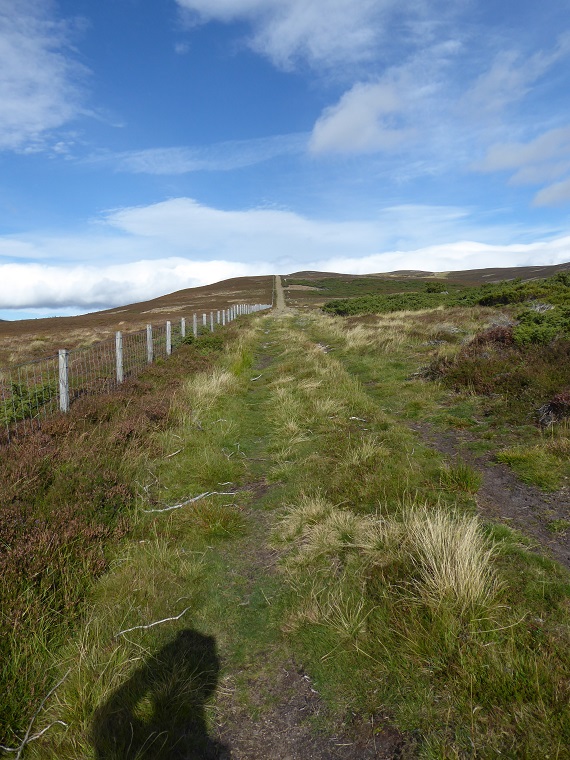
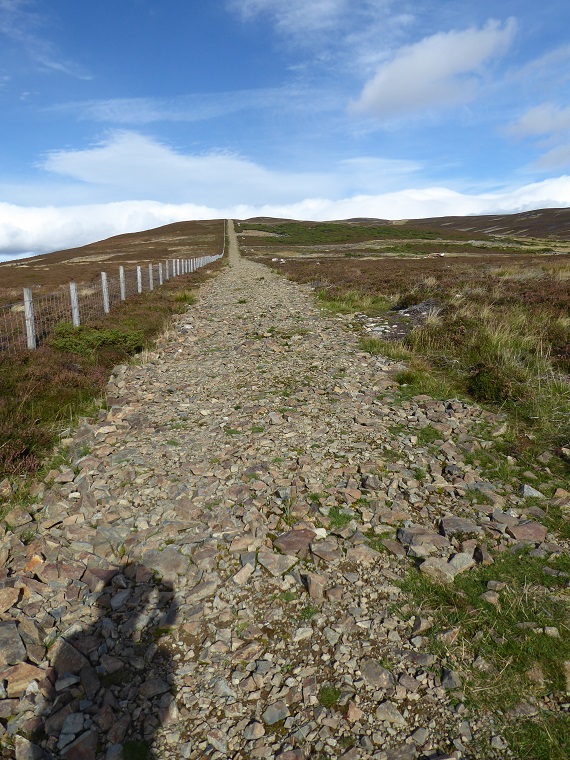
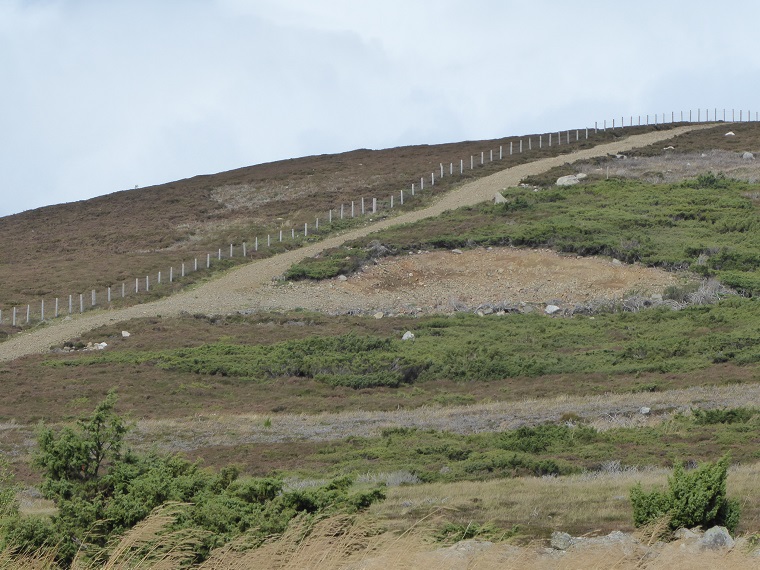
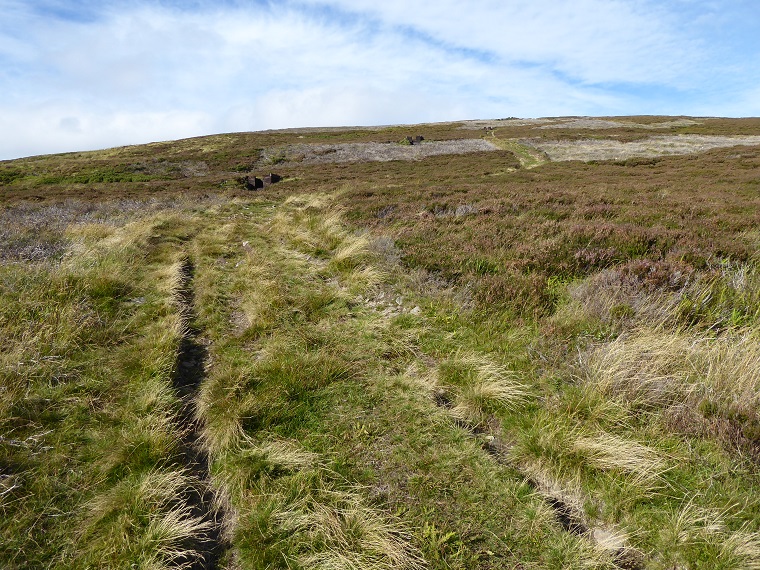
The Planning Committee in July agreed to grant retrospective planning permission to the remedial works proposed by Findrack Investments subject to their meeting 5 further conditions within 3 months. Part of the Minute is interesting:
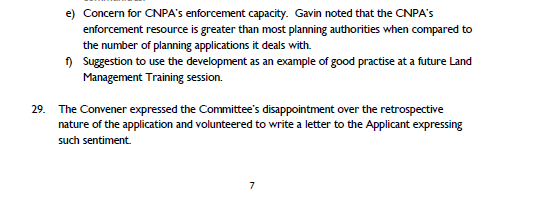
Two days before the deadline set by the Planning Committee, Findrack submitted a set of proposals to the CNPA which were judged inadequate. At the Planning Committee in November officers submitted a further report stating that if the conditions were not met within the week, enforcement action. It is not clear from the planning portal, where the latest information on the application dates back to 14th July, what the currrent position is..
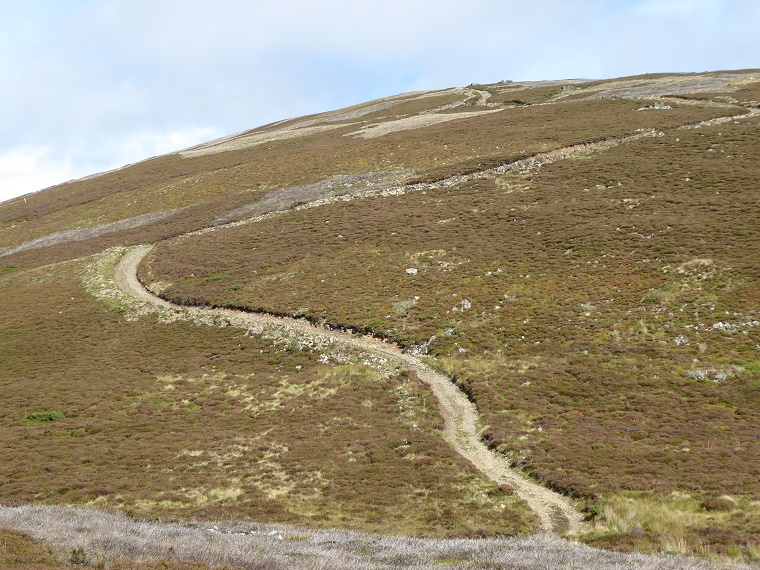
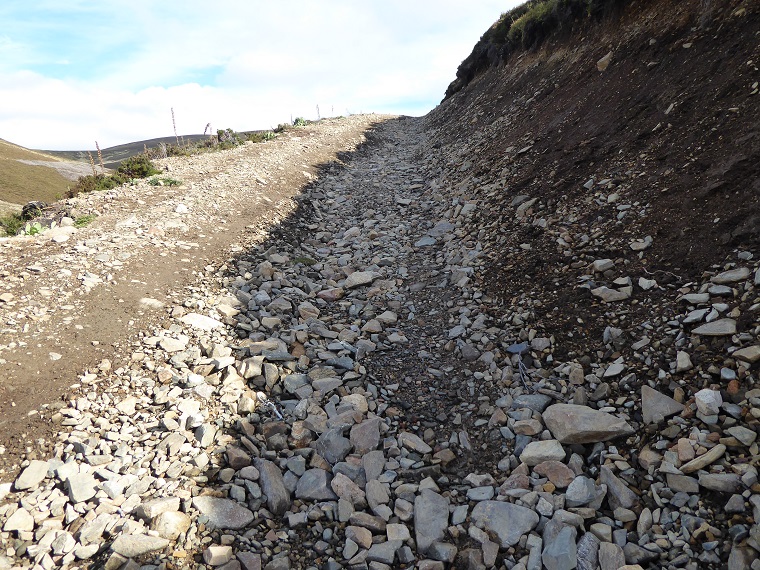
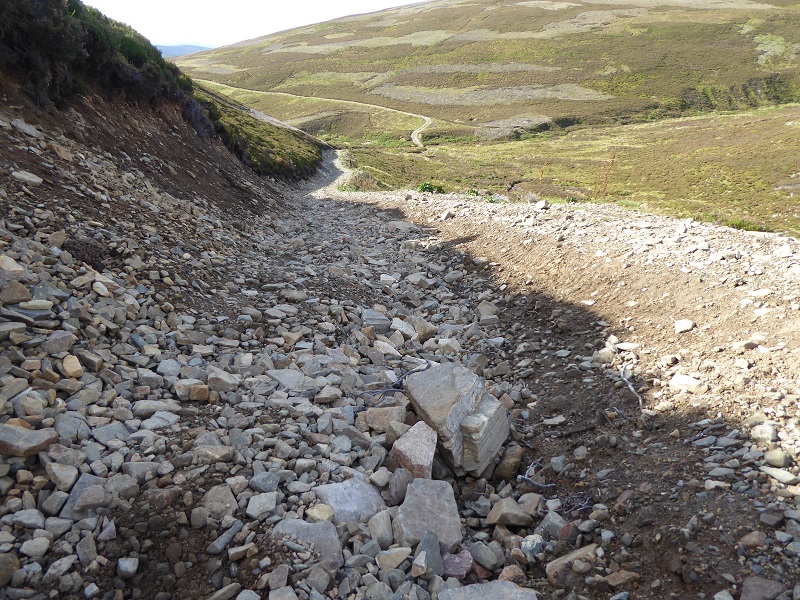
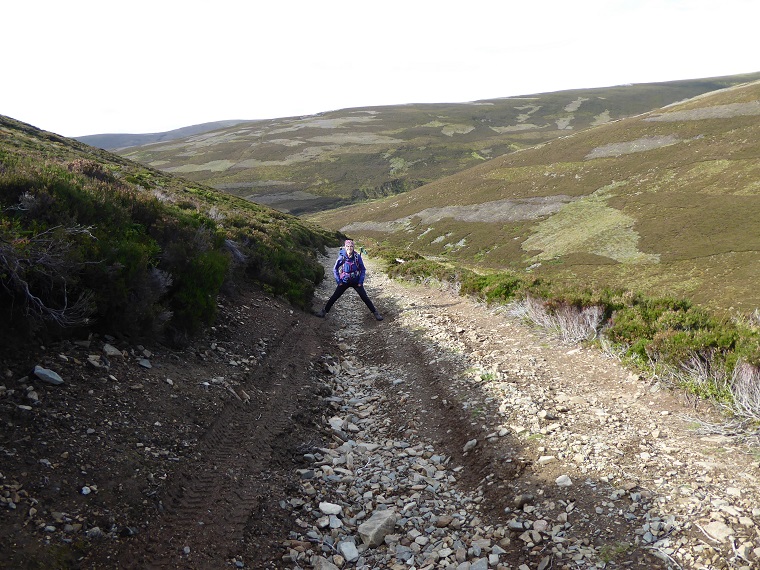
The section of track 2 in the three photos above appears to have deteriorated significantly since the photos which were taken by the CNPA enforcement officer.
The photos above, combined with those taken by Park staff, show that the CNPA needs to act and sort this out. While I did not walk the third section of track in the map above, track 6, I suspect the biggest issues are yet to be consider by the CNPA in public.
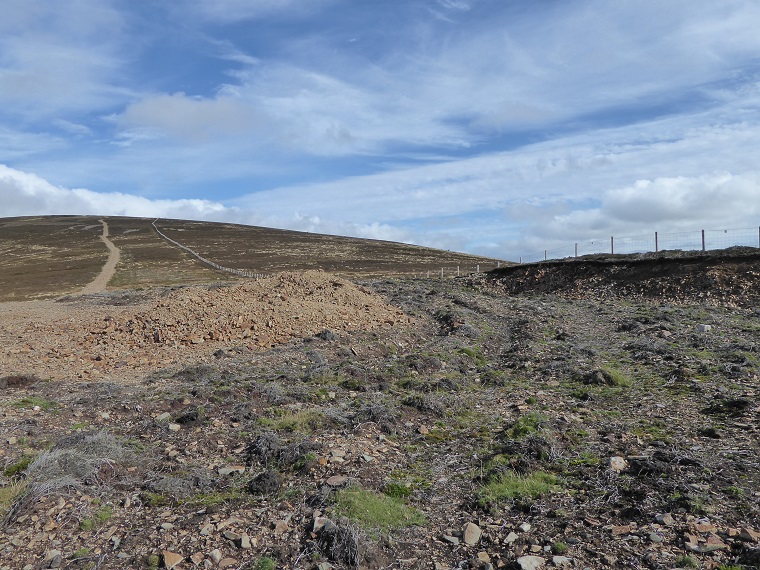
So, why hasn’t the CNPA acted earlier?
While the July Committee report is thorough and in many ways a good piece of work it shows the shortcomings of the current approach to planning in the National Park. There are worrying statements in the report such as:
- “a compromise could be reached to focus on the most significant issues” – should our National Parks be compromising on the landscape?
- “tracks are a feature of these landscapes” from the landscape adviser which suggests they think the battle has been lost.
Most of the justifications for the remedial works are also based less on landscape grounds than the need to prevent soil and other materials eroded from the track impacting on the River Dee and Muir of Dinnet Special Areas of Conservation. The Access Officer reports that the development “would have a minor impact on outdoor access”: well, the one pair of walkers we met on this section of track agreed that they had destroyed walking experience.
Its as though the staff employed by the National Park have lost the will to fight for the reasons why it was set up, to protect the landscape and natural environment.
And part of the reason for that, I believe, is that CNPA staff are expected to work in partnership with people who simply aren’t prepared to do so and are also part of our governing elite.
Findrack investments, the Game and Wildlife Conservation Trust and Partnership working
Findrack investments, which lease the shooting on Dinnet and who made the retrospective planning application, appear to be a private investment company run by two people, Vikram Lall and Andrew Salvesen. They are not short of a bob or two, according to their latest accounts Findrack Investment have almost £33.5 million invested in various shares and securities, while Lall and Salvesen are also directors of Findrack Hostels which own Euro Hostels, which many readers may have heard of, and has c£15m of assets. I think we can take it that these two gentleman could afford to pay for all the works outlined in the retrospective planning application and to remove all unlawful tracks if they wanted to or, failing them, if the CNPA forced them to do that.
Lall was previously a merchant banker and has been director of many companies, including charitable ones. Andrew Salvesen was a Director of Aggreko, which constructs and hires power generators, 1997-2009, and has been one of Scotland’s most “successful” companies. He has been a Director of Countryside Alliance Insurance Services (the CA represent the hunting and fishing lobby in England) and has been a Director of the Game and Wildlife Conservation Trust from 2013 having previously been a Director 2008 to 2012. Its the Game and Wildlife Conservation Trust which agreed the need with SNH to suspend mass hare culls and is also working with SNH to develop a methodology to count hares (which is apparently required before the Minister will take any action – see previous post).
Now, I am not sure if the CNPA are aware who the Directors of Findrack Investments are but, given the destruction they have caused in the National Park and the way they have failed to co-operate with CNPA staff on the Dinnet hill tracks, I think its a fairly safe conclusion that there is little chance of them working in partnership to improve wildlife diversity on our moorlands. Indeed, Dinnet is not part of the east Cairngorms Moorland Partnership which the draft Partnership Plan promoted as being the key vehicle by which it would develop conservation in partnership with landowners. This leaves a great hole in the middle of that partnership. The conclusion really should be quite simple, where partnership is not working, regulation and enforcement is needed and the CNPA now needs to devote the resources necessary to remove the unlawful new tracks from Dinnet and ensure the pre-existing ones are brought up to the right standard, not just the worst cases as suggested in the report, but any work that did not meet the required standards.
More broadly, the CNPA might usefully consider what Andrew Salvesen’s directorship of the GWCT and apparent inability to work in partnership might have on the likelihood of the GWCT partnership with SNH delivering any meaningful evidence on hare numbers. This is the evidence they say is needed before they can do anything to stop the mass culling of mountain hares. It may be just coincidence but on our walk through the hills on the Glen Fenzie half of the estate we saw not a single mountain hare until after we had entered the SSSI on the flanks of Morven. While I’d be very happy if anyone can provide photos that show otherwise, what wildlife exists on Dinnet is totally connected with the hill tracks. The tracks are used by keepers to check traps, look out for raptors and feed grouse. There are lots of grouse and not much else. Half the purpose of these tracks is to destroy wildlife that is seen as a threat to shooting interests – I think of them now as persecution tracks as well as scars on the landscape – so removing the tracks that have no planning permission would be good for both the landscape and wildlife and consequently would be good for walkers too.

These tracks are just a mess. By the look of them they were probably constructed by the gamekeepers to save money for Salvesen.
CNPA should bring an enforcement action against Findrack Investments to restore the new tracks to the original habitat and the older tracks into better condition.
These pictures of the tracks and the lack of action by CNPA so far should be brought to the attention of the press.
As regards mountain hares you will see very few on the moor because they are routinely killed purportedly to control loupin ill in grouse. In 2009 I found a pile of dead and decomposing hares dumped inside a grouse butt.
I completely agree with Jim Craib’s comments. CNPA should take strong action against Findrack.
Jim is spot on.